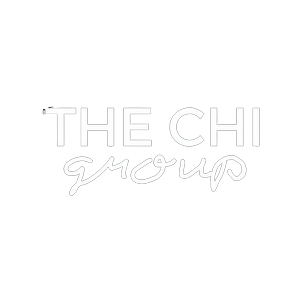The Power of Narrative: How Public Relations Harnesses the Art of Storytelling
The realm of public relations (PR), storytelling is more than just a creative outlet—it's a powerful tool that helps organizations connect with their audience on a deeper level, shape perceptions, and drive engagement. In today's fast-paced digital landscape, where information overload is the norm, compelling narratives cut through the noise, leaving a lasting impact. In this blog post, we'll explore the symbiotic relationship between public relations and storytelling, delving into how PR professionals utilize narrative techniques to convey messages, build brand affinity, and foster meaningful connections.
1. Creating Emotional Connections:
At the heart of effective storytelling in public relations lies the ability to evoke emotions. Whether it's joy, empathy, excitement, or even outrage, compelling narratives have the power to stir feelings and resonate with audiences on a visceral level. PR professionals leverage emotional storytelling to humanize brands, making them relatable and fostering authentic connections with their target audience. By tapping into universal emotions and shared experiences, brands can transcend the role of mere products or services and become part of their audience's story.
2. Shaping Brand Identity and Perception:
Storytelling serves as a vehicle for shaping brand identity and perception. Through strategic narrative construction, PR professionals can craft a brand narrative that communicates the organization's values, mission, and unique selling proposition. By sharing stories of innovation, social impact, or customer success, brands can shape how they are perceived by the public, differentiate themselves from competitors, and build a distinct identity that resonates with their target audience. Consistent storytelling helps reinforce brand messaging, ensuring that it remains top-of-mind among consumers.
3. Building Trust and Credibility:
In an era of skepticism and distrust, building trust and credibility is paramount for brands. Storytelling allows PR professionals to convey authenticity, transparency, and integrity, key elements in establishing trust with their audience. By sharing authentic stories of company culture, employee experiences, or corporate responsibility initiatives, brands can humanize their image and demonstrate their commitment to ethical practices and social good. Trustworthy brands are more likely to foster loyal customers, advocates, and brand ambassadors who believe in their narrative and values.
4. Engaging Stakeholders:
Storytelling is a powerful tool for engaging stakeholders, including customers, employees, investors, and the media. PR professionals use storytelling to create narratives that resonate with each stakeholder group, addressing their unique interests, concerns, and motivations. Whether it's a customer success story that highlights the benefits of a product, an employee spotlight that showcases company culture, or a corporate announcement framed as a compelling narrative, storytelling helps capture attention, spark conversation, and drive action among key stakeholders.
5. Navigating Crisis Communications:
During times of crisis or reputation management challenges, storytelling can be a valuable asset for PR professionals. By crafting a narrative that acknowledges the situation, demonstrates accountability, and outlines a path forward, brands can mitigate reputational damage and rebuild trust with stakeholders. Authentic storytelling humanizes the brand's response to crisis, emphasizing empathy, transparency, and a commitment to addressing the issue at hand. Through effective narrative management, brands can emerge from crises stronger and more resilient than before.
6. Amplifying Thought Leadership:
Storytelling is instrumental in establishing thought leadership and industry expertise. PR professionals leverage storytelling to position key executives, subject matter experts, and influencers as authoritative voices within their respective fields. By sharing personal anecdotes, industry insights, and thought-provoking narratives, thought leaders can demonstrate their expertise, build credibility, and attract followers who value their perspective. Thought leadership storytelling not only enhances the individual's reputation but also elevates the brand's authority and relevance within the industry.
7. Measuring Impact and Iterating:
In the digital age, data-driven insights are essential for evaluating the effectiveness of storytelling efforts in public relations. PR professionals use analytics tools to track key performance indicators such as audience engagement, sentiment analysis, website traffic, and media mentions. By analyzing these metrics, brands can assess the impact of their storytelling initiatives, identify areas for improvement, and iterate their narrative strategy accordingly. Data-driven storytelling allows PR professionals to optimize their storytelling efforts for maximum impact and ROI.
Storytelling is a cornerstone of effective public relations, enabling brands to connect with their audience, shape perceptions, and drive meaningful engagement. By harnessing the power of narrative, PR professionals can create emotional connections, shape brand identity, build trust, engage stakeholders, navigate crises, amplify thought leadership, and measure impact. In an increasingly competitive and cluttered media landscape, compelling storytelling sets brands apart, leaving a lasting impression on their audience and driving long-term success.

